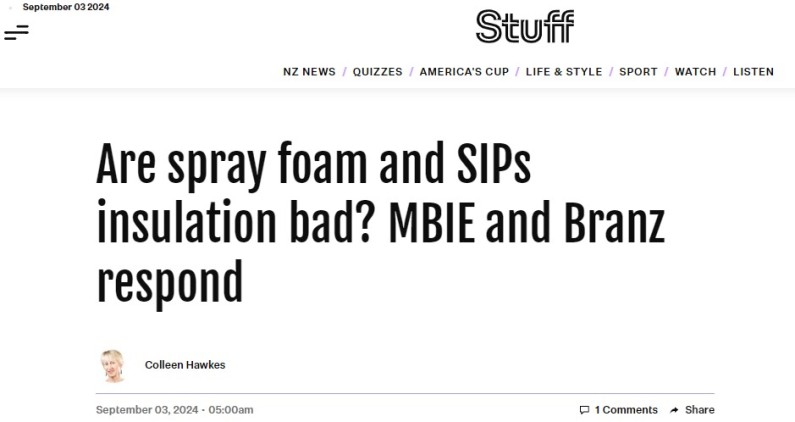Misleading Claims in Stuff Article on SIPs, September 3rd 2024

Misleading Claims in Stuff Article on SIPs: The Facts About Formance Structural Insulated Panels
A recent article published on Stuff, September 3, 2024, containing opinons from Robin Curtis of Health Based Building, presents misleading claims about Structural Insulated Panels (SIPs).
Mr. Curtis asserts that SIPs, particularly those with expanded polystyrene (EPS), absorb moisture, perform poorly in airtight environments, and pose toxicity risks. These claims are false, and made by someone selling alternative building materials, so potentially contain a commercial bias.
Mr. Curtis is a shareholder in Health Based Building, a company selling alternative building materials. Neither Mr. Curtis nor the reporter involved have contacted us to understand the Formance SIP system. The opinions expressed in the article are misleading and damaging to the well-established reputation of SIPs for improving quality of life through better building practices.
False Claims
- Moisture Absorption: In the Stuff article, Mr. Curtis says that SIPs, particularly those using EPS, absorb moisture, leading to mold and decay. When installed in accordance with our design guidance this simply does not happen. It is important to undestand the primary sources of moisture within a building envelope is vapor from indoors, which becomes an issue if it enters the building envelope. This can occur with traditional timber-framed buildings but not with the Formance SIP system, which is air-sealed using tapes on all joins. Formance SIPs are vapor semi-impermeable at ambient air pressures experienced in occupied spaces, preventing moisture ingress and maintaining a healthy environment. SIP buildings regularly among the most airtight buildings when measured with the blower-door test.
- Airtightness and Ventilation: Mr. Curtis claims that SIPs buildings "fail globally" when reducing air exchanges to decrease energy use. This statement is false. Airtightness and high thermal insulation properties are highly desirable for any building envelope, and when combined with a heat-recovery mechanical ventilation system, they create energy-efficient and healthy buildings. Some of the highest-performing buildings worldwide are constructed with SIPs, including many examples in Aotearoa, New Zealand.
- Toxicity Concerns: Mr. Curtis suggests that SIPs pose toxicity risks. The Formance SIP system has been assessed and awarded a Declare Label under the Living Building Challenge, which includes rigorous VOC testing to measure the levels released into the air. The Formance panel has been tested to the highest standards, including Californian standards—among the strictest in the world—and met these requirements, ensuring it is safe for use.
The claims made by Mr. Curtis are misleading and fail to recognize the rigorous testing and high performance of SIPs, such as those in the Formance system.
A balanced approach, incorporating perspectives from SIP experts and manufacturers, would have given readers a clearer understanding of the benefits and reliability of SIPs.
For more accurate information about the Formance SIP system, refer to the well-established sources of truth on SIPs including SIPA, and BRANZ.
You can find certified information on the health-aspects of the Formance system by checking out our Declare Label on the Living Building Challenge website.






